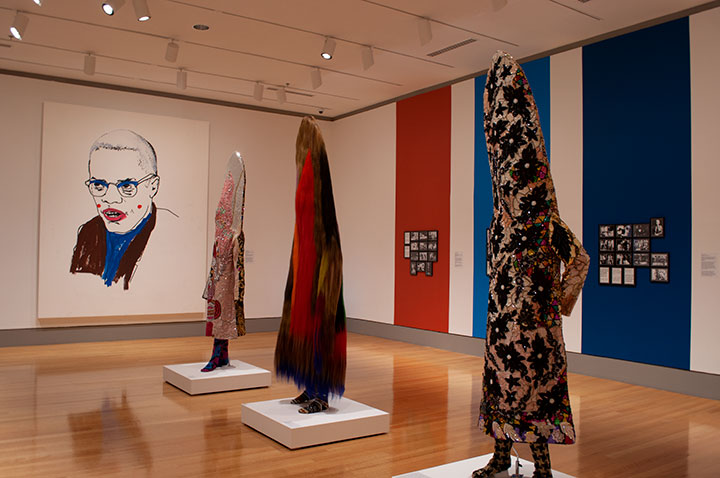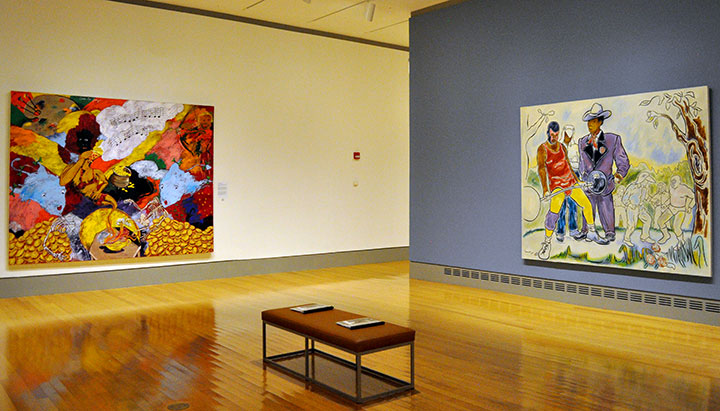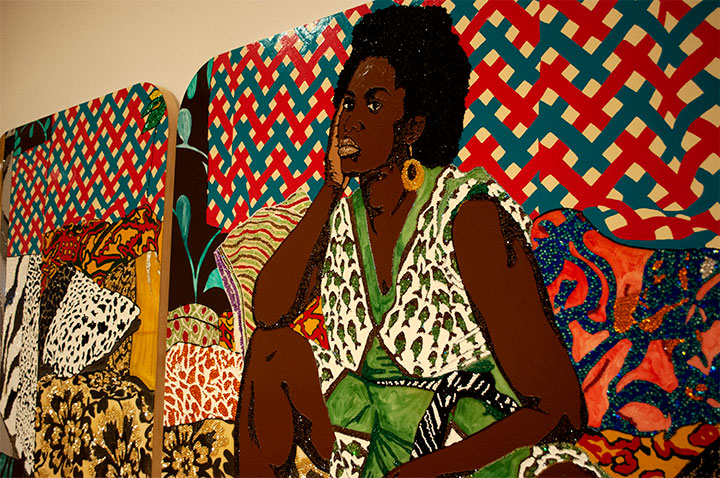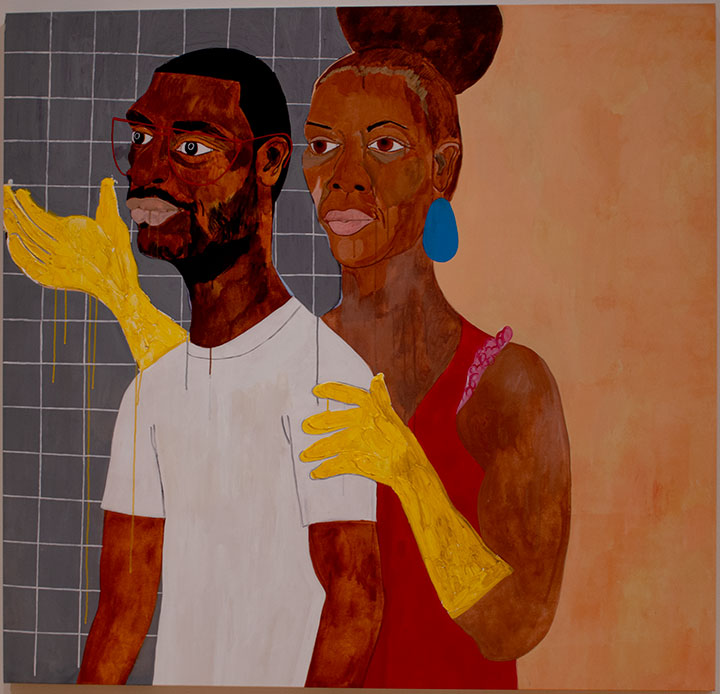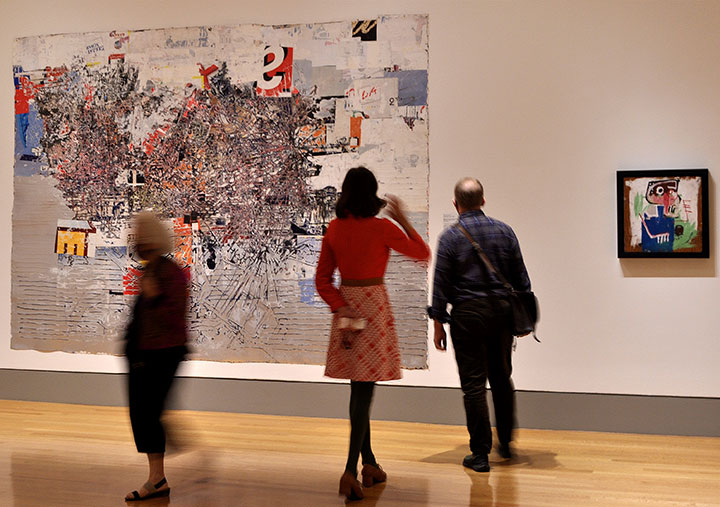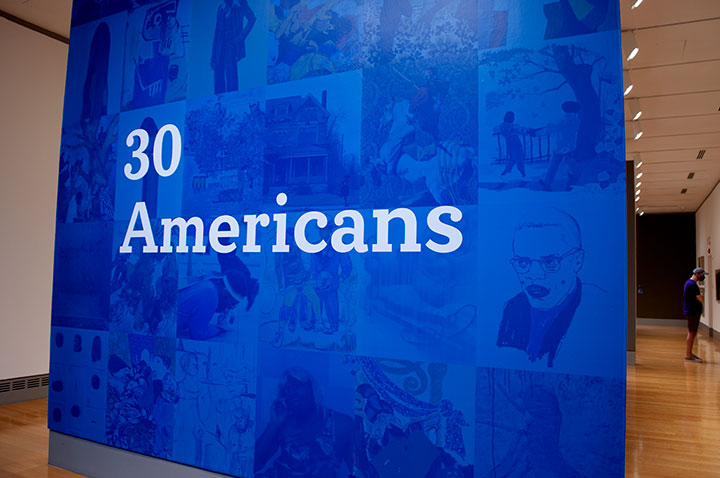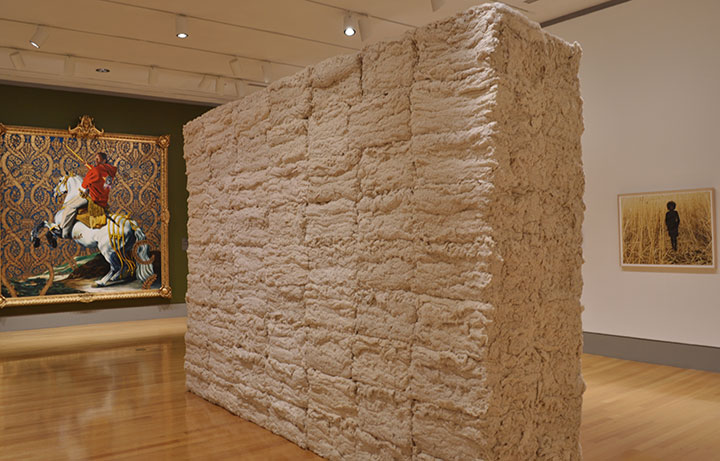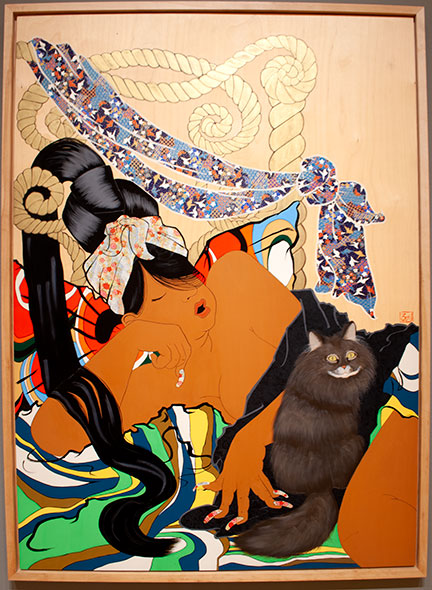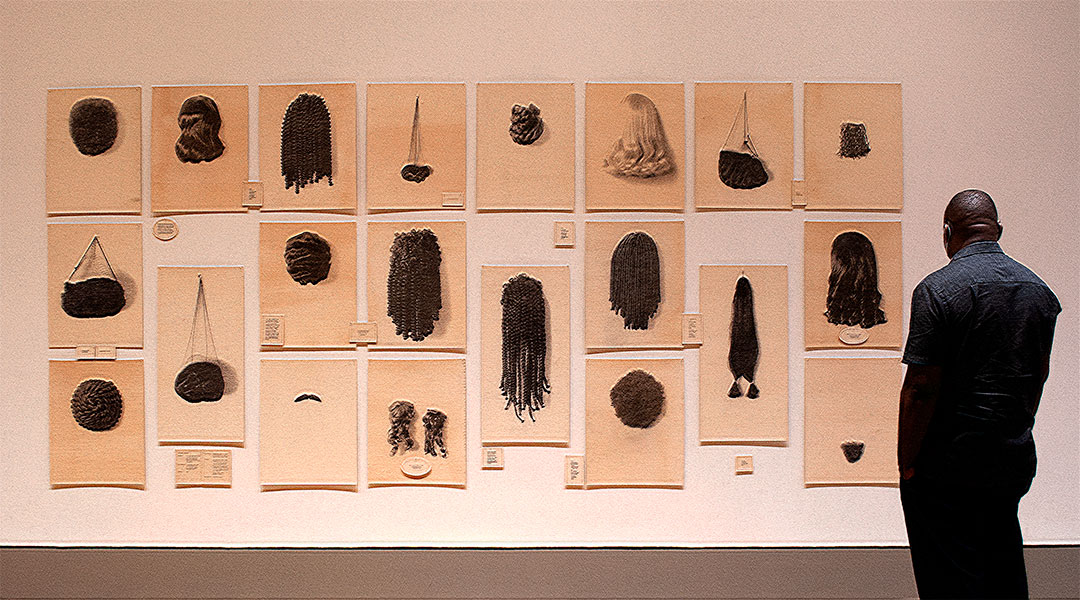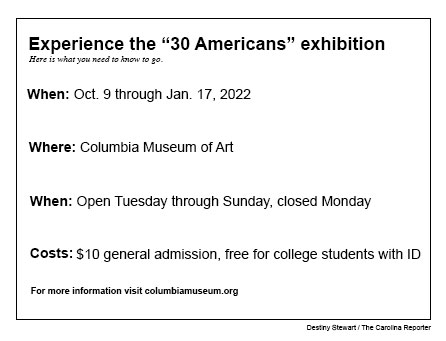The “30 Americans” exhibition holds 54 pieces of artwork that span across six themed galleries. Each theme addresses different aspects of Black history and culture. Using various art mediums, each artist uses their work to showcase the human experience. Photos by Destiny Stewart.
The Columbia Museum of Art is hosting “30 Americans,” an exhibition featuring reflections of Black life and influential Black artists from different eras.
The touring exhibition originated in 2008 at the Rubell Museum in Miami and uses various art mediums to portray human experiences. “30 Americans” will be on display at the Columbia Museum of Art until Jan, 17, 2022.
For gallery guard Darnell Esper, experiencing the exhibition was emotional. Growing up in the 1970s, he spent some of his adolescence in rural Mississippi, playing across from cotton fields that his grandparents once worked in. That’s why Leonardo Drew’s “Untitled #25”, a cotton bale installation, made him return to his childhood.
“It’s a flood of emotions,” said Esper. “It challenges you to really think about humanity.”
Catherine Walworth, a Columbia Museum of Art curator, was tasked with organizing the exhibition.
“In thinking about this exhibit, there are three generations of artists,” said Walworth. “There are many queer artists, there’s different economic backgrounds, there’s men and a really healthy balance of women and all those perspectives and lived experiences and choices.”
“30 Americans” is a fitting name for an exhibition of its kind. It features works from artists of different ages, genders and sexualities, suggesting the diversity of mankind. Viewers are guided through a journey of humanity with 54 pieces of artwork throughout six themed galleries. Every gallery addresses different aspects of life and art. One gallery reflects on Black struggles and the history of enslavement, while others focus on performing and visual arts. There is also one dedicated to the rise of political and economic power in the Black community during the 1970s.
The entrance to the exhibition is an introduction to a world of Black identity, Black love and Black culture. With works like Lorna Simpsons’ “Wig (Portfolio)” which uses felt paper to display an array of hair wig styles, and Iona Rozeal Brown’s “Sacrifice #2: It has to last,” that taps into the Black influence on Japanese culture, the gallery explores the significance of identity.
This exhibition was tailored specifically for Columbia’s museum over a two-year period.
“(I wanted) this to be a little different,” said Walworth. “But the thing that I had to do was make it make sense in this gallery.”
With community in mind, the Columbia Museum of Art hosted four “listening sessions” which invited those in the community to preview the artwork and share their opinions and reactions.
“Our staff just sat quietly and listened to community members see slides and say how they felt about the pieces,” said Walworth. The voices from the audience helped shed light on the response that the viewers might have towards the pieces on display.
The experiences shown in the works act as a mirror to the audience. It allows them to see themselves and relate to art in ways that they possibly hadn’t before.
The intention of the exhibit is to make you question the lives behind the art, and the art that was produced because of the life; essentially blurring the line between the two.
In an interview on Wednesday with Carolina News and Reporter, Mera Rubell, the collection owner, said she wants visitors to appreciate “good art.” Rubell and her husband Don own one of the largest private contemporary art collections in the country.
As a young couple, they bought their first piece of art in 1964. Mera was a teacher at the time and Don was in medical school, so they could only afford to purchase works on a payment plan.
They began forming relationships with artists in their community and eventually committed themselves to collecting art. After 30 years, the Rubells realized they had something a wider group of people needed to see.
“(It was) something special here that needed to be celebrated,” said Rubell. “It was an opportunity to show young artists… talent that hadn’t been realized.”
The name “30 Americans” was inspired by the Museum of Modern Art’s “American” series, which showcased up-and-coming artists across the nation. However, the lineup often neglected and overlooked an integral part of American and art history, according to Rubell.
“30 Americans” was a chance to discover the Black artists that were, and still are, making waves in the art world.
It was originally put on display at the Rubell Museum in 2008, and had its first traveling show in 2011 at the North Carolina Museum of Art in Raleigh. Thirteen years later, it has made its way to Columbia.
General admission is $10. Admission is free for members and college students with ID.
“Our only way to survive is for us to understand each other,” said Rubell. “(That is why) we will not stop “30 Americans”… we will make this work available.”
The exhibition that features Black artists from all walks of life. The collection originated in Miami at the Rubell Museum in 2008.
Leonardo Drew, Xaviera Simmons and Kehinde Wiley’s works are on display in the “Through the Looking Glass” gallery of the “30 Americans” exhibition. This gallery examines the struggles of Black people through the years using photography, paintings, and an installation.
Iona Rozeal Brown addresses cultural appropriation in her painting “Sacrifice #2: It has to last”, which plays on Japanese artist Tsukioka Yoshitoshi’s Meiji-era painting. She portrays the widespread influence of African-American culture by mixing those elements with traditional Japanese artistic elements.
Artist Lorna Simpson created “Wigs (Portfolio),” a group of 21 prints on felt paper, in 1994. The collection explores the significance of African American hairstyles and identity. It is on view at the Columbia Museum of Art.

